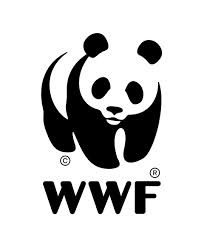Brazil, WWF and Partners Announce Deal to Secure World’s Largest Network of Tropical Forest Protected Areas
May 21, 2014 /3BL Media/ - In a historic move, the Brazilian government, World Wildlife Fund (WWF) and partners today announced the creation of a $215 million fund to ensure long-term protection of the world’s largest network of protected areas – 150 million acres of the Brazilian Amazon rainforest.
The innovative plan for sustainable funding of the Amazon Region Protected Areas Program (ARPA), which comprises 15 percent of the Brazilian Amazon, was a key driver in this landmark moment and sets a precedent for large-scale biodiversity conservation.
In 2011, after a decade of traditional fundraising to support ARPA’s long-term costs, WWF teamed up with the Government of Brazil; Brazilian Biodiversity Fund, a private non-profit organization that designs and manages financial mechanisms for biodiversity conservation; Larry Linden, a former partner at Goldman Sachs, who founded the Linden Trust for Conservation (LTC); and the Gordon and Betty Moore Foundation, to lead the creation of the long-term financing plan for ARPA.
The fund is unique in that it consists of money from a variety of public and private partners, including the Government of Germany, the Inter-American Development Bank, Global Environment Facility and WWF. The fund also provides the first-ever opportunity to properly manage and monitor a large-scale protected areas system.
ARPA currently encompasses 128 million acres of richly bio diverse rainforest – the size of one and a half Californias. Some of the new funding will be used to incorporate an additional 22 million acres of rainforest in the coming years.
“The explosion in demand for natural resources has made our parks and world heritage sites vulnerable,” said Carter Roberts, president and CEO of World Wildlife Fund (WWF). “So we convened leading financial thinkers and philanthropic partners to create a plan for a first-of-its-kind bridge fund to ensure ARPA’s inspiring success story can be told forever.”
In 2002, Brazil created the ARPA program to continue its commitment made in 1998 to protect at least 10 percent of the Brazilian Amazon in response to growing concerns about the future of tropical rainforests.
“The Brazilian rainforest is at the heart of our country,” said Maria Cecilia Wey de Brito, CEO of WWF in Brazil. “It is what defines us. The Brazilian government’s leadership in helping to create and maintain this fund provides us with more confidence than ever that we can slow the arc of deforestation in our rainforest and create a model for large-scale conservation worldwide.”
The $215 million in funding will be disbursed slowly, starting high until it reaches zero, allowing the government of Brazil to steadily increase its internal funding and assume full responsibility for funding in perpetuity by the time the bridge fund is depleted approximately 25 years from now.
Below is the list of ARPA supporters. Statements from several of the supporters are included here.
- Amazon Fund/BNDES
- Brazil Ministry of the Environment
- Brazilian Biodiversity Fund (FUNBIO)
- Brazilian private donors
- Chico Mendes Institute for Biodiversity Conservation
- Federal Ministry for Economic Cooperation and Development of Germany
- Fundação Boticário
- Global Environment Facility
- Gordon and Betty Moore Foundation
- Government of Brazil
- Inter-American Development Bank
- Joseph and Carson Gleberman
- KfW German Development Bank
- Linden Trust for Conservation
- Margaret A. Cargill Foundation
- Natura
- Redstone Strategy Group
- Roger and Vicki Sant
- State Governments of Brazil: Acre, Amazonas, Amapá, Mato Grosso, Pará, Rondonia and Tocantins
- Wendy and Hank Paulson
- World Bank
- World Wildlife Fund
About World Wildlife Fund
WWF is one of the world’s leading conservation organizations, working in 100 countries for over half a century. With the support of almost 5 million members worldwide, WWF is dedicated to delivering science-based solutions to preserve the diversity and abundance of life on Earth, halt the degradation of the environment and combat climate change. Visit www.worldwildlife.org to learn more and keep up with the latest conservation news by following @WWFNews on Twitter.




